Cable for heating a water pipe: marking, types, manufacturers + selection features
In the adjusted life of a country house, nature sometimes makes adjustments. In winter, housing can be left without water due to freezing of pipes, even those that are underground and insulated with mineral wool.
To maintain comfort in the house during cold times, you can use a cable to heat the water pipe, then even the most severe frosts will not be harmful to communications. We will talk about how to choose the most suitable type of cable. In the article we proposed, the types of heating systems are described, the decoding of the marking is given.
The content of the article:
Varieties of heating cables
Distinguish heating cables resistive and self-regulating. Their main characteristic is specific heat release, expressed in the amount of heat per meter.
A cable may contain several components integrated into a single system.
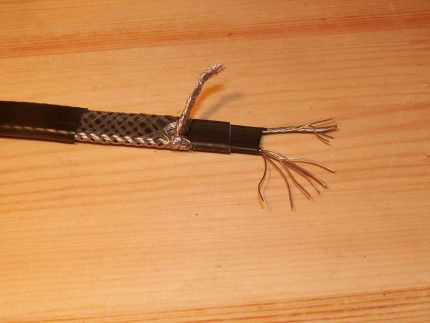
They mount it on communication using one of two methods - along the pipeline and through internal installation. The choice of method is influenced by specific circumstances.
View # 1 - resistive cable
The principle of operation is based on the property of metals to warm up when an electric current passes through them. A metal core is heated here, and the device itself can be compared with a long boiler. A feature of such cables is a stable amount of heat generated at any outdoor temperature.
This is their main drawback - the impossibility of saving electricity.Its consumption will be the same both at +1 ° C, and at - 18 ° C outside, if you do not equip the system with a temperature controller and temperature sensors.
Such wires can not be placed close to each other, also when laying, it is necessary to exclude their intersection. Otherwise - overheating and all the consequences arising from it. In turn, the heating cable of the resistive type can be of three types - single and two-core, as well as zoned.
Two-core are more expensive than single-core, but, despite this, are more popular. This is due to the fact that due to their design features, when connecting, there are no difficulties.

The twin-core products have a power of 15.6 W / m at a maximum temperature of 90⁰. A single-core cable is characterized by a power of 20-30 W / m. The temperature limit is 120 ° C.
The main difference between single and two-wire products is the connection method. One of the ends of the two-wire wire is plugged, and on the opposite side there is a simple electric cord with a standard plug designed to be plugged into a 220 V outlet.
One of the cores in it is responsible for heating, and the second serves as a conductor of electric current. Single-core wires are connected at both ends, and this is somewhat inconvenient.
A feature of the resistive wire of the first two types is that it cannot be cut. It just becomes inoperative, so the purchased cable needs to be laid completely.
The zonal thermal cable is a somewhat advanced structure. Between his veins there are heating spirals. They are located so that the cord with a certain step can be cut into pieces.
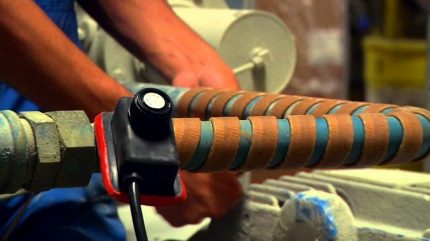
With the burnout of the conductor in some part of such a product, a cold zone will arise, but the system itself will not stop functioning.
View # 2 - self-regulating heating cable
Concurrently located conductors in a self-regulating cable are separated by a semiconductor matrix with a heating element in the core. It radiates heat constantly, and only current flows through the conductors. The cable itself has the form of a tape. It can be cut anywhere without the risk of a cold patch.
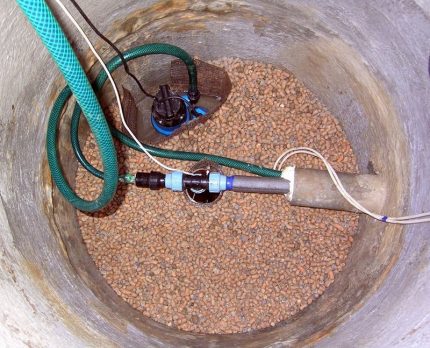
Depending on the ambient temperature, the heat transfer of the cable can be adjusted, although it can be adjusted independently to the external environment.
It increases power when the temperature inside the pipe drops and turns off when it grows. Since the amount of heat released is normalized, the product never overheats. Self-regulating cable possesses great strength, holds shock loads well, is resistant to moisture and aggressive chemistry.
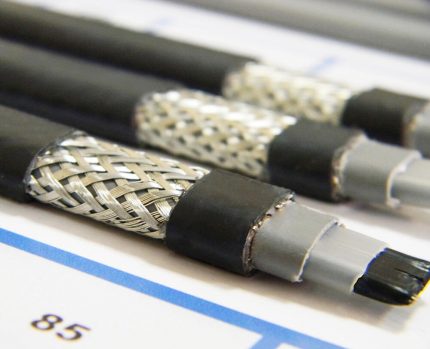
Due to the fact that the composition of the polymer-dielectric from which the matrix of the self-regulating cable is made contains a conductive finely dispersed material, temperature correction is possible.
It happens as follows:
- the dimensions of the matrix decrease with decreasing temperature;
- a larger number of current-carrying circuits is formed in the conductor;
- the used power, and therefore the heat dissipation, increase.
This cable serves for a long time - about 10 years.When overlapping, it does not overheat, since the power in this area becomes minimal. When cutting the cable, the total power of the segment will change, and the heating will remain the same.
The best manufacturers of heating cable
Cables for heating are produced by many companies, both domestic and foreign.
The most popular among manufacturers are products of companies:
- Nelson;
- Lavita;
- Ensto;
- Devi
- Veria
- Raychem;
- CTK.
Consider the features of the products of these companies in more detail.
Place # 1 - NELSON LIMITRACE
Emerson (USA) is a company specializing in the production of self-regulating thermal cables. Products are known for their high quality, as in the process of production is subjected to multi-stage control. At the final stage, aging testing is performed.
NELSON cable life without loss of power is about 20 years. To protect the water pipes from frost, they use such a brand of cord as NELSON LIMITRACE HLT210-J.
It has the following characteristics:
- effective temperature limited to 120 ° C;
- maximum length - up to 115 m;
- power supply - 220-240 V;
- power - 32 W / m.
NELSON LIMITRACE HLT212-J can also be used. for heating a water pipe. It differs from the previous one with a slightly higher power (37 t / m) and a length of maximum 105 m.

The shorter the Nelson cable, the greater its power. So, the power of NELSON LIMITRACE HLT215-J is 46 W / m, but the length is only 95 m. NELSON LIMITRACE HLT218-J has a length of 80 m and the power is 56 W / m.
Rank # 2 - DEVI and Veria
Danish company Danfoss, which manufactures products under the DEVI brand, supplies the market with several options for heating wires - single and twin-core, as well as self-regulating. Each of the species has its own purpose.
They are plastic, have a long service life, reliable, environmentally friendly. Products have a fixed length, so you can neither cut nor increase their heating area. All these manipulations can only be carried out with a “cold end”. The Devi cable has a robust insulation that is sufficient for power in all conditions.
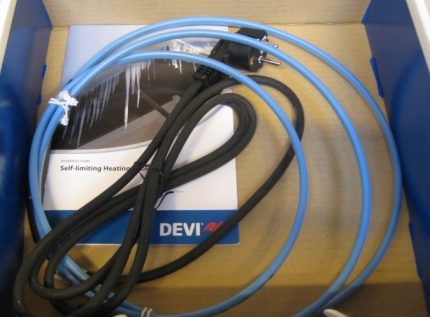
The products of Veria, a subsidiary of Danish Danfoss, have the same high quality characteristics as DEVI products, but their price is lower. Cable power - 20 W / m, length from 10 to 125 m. The manufacturer gives a guarantee for his heating cable for at least 12 years.
Rank # 3 - Lavita
Lavita is a South Korean company. Self-regulating cables of this manufacturer are used both in everyday life and for protecting pipelines in industrial facilities. The company always fulfills its contractual obligations, strictly complies with the quality system, therefore its products are very in demand on the market.
For internal heating of pipelinestransporting water for drinking, use a food cable Lavita HPI 13-2 CT. It is highly flexible for easy installation. The fluoropolymer from which the outer insulation is made is completely safe in terms of ecology.
Laser marking is also harmless; it does not dissolve in water. Long life and economical energy consumption provide flexible power changes.
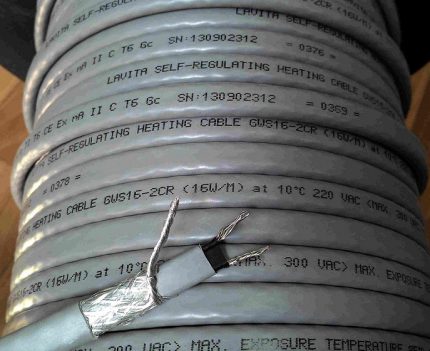
Nominal cable power - 13 W / m, maximum temperature 65 ° C. The length of the heating circuit depends on the switching temperature and is 51 - 108 m maximum.
Rank # 4 - Producer Ensto
Ensto heating wires manufactured by Ensto, an international concern based in Finland, stand out for their high quality.
They provide safety and energy efficiency, guarantee frost protection of water pipes. Products are easy to install, convenient to use, durable, because high-quality components are used in the production.
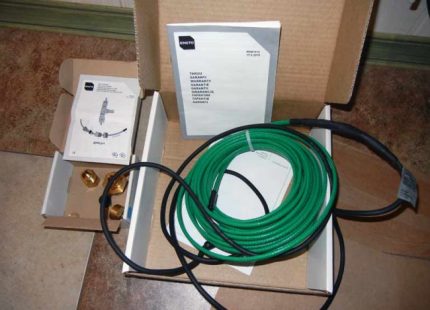
For domestic use, the Ensto Plug’n Heat cable set is most commonly used. This is a self-regulating cable with a power of 90 W and a length of 10 m. The maximum working temperature is 65 ° C. Installation is possible both inside the pipe and from the outside.
Rank # 5 - Raychem
To protect a relatively small cross section of a water pipe from freezing, the Raychem ETL cable is the most suitable option. It is equipped with a Teflon sheath, suitable for both outdoor and indoor installation.
The cable regulates the heat transfer based on the ambient temperature. In water at 5 ° C it has a power of 20 W / m; when mounted on top of a metal pipe at the same temperature, the power is halved. The cable is certified for use in drinking water pipelines.
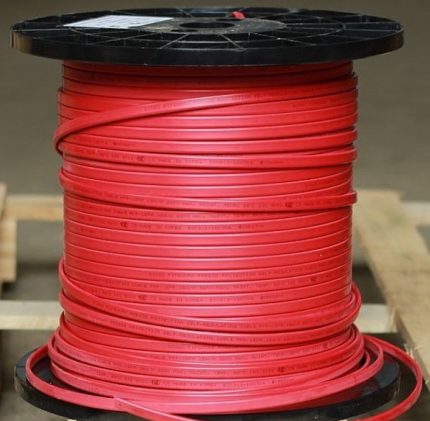
The Rayham FroStop Blask cable is suitable for outdoor use. In this case, it has a power of 18 W / m at 0 ° C. When installed in cold water, its power rises to 28 W / m.
Self-regulating FroStop Green with a rated power of 10 W / m, GM-2X (18 W / m) is also used to protect the water pipe.
Place # 6 - Domestic Manufacturers
Chuvasteplokabel - A domestic company established 18 years ago. Produces thermal products under the brand name CTK. Heating cables are created taking into account all the advanced developments of European companies. They are not inferior in quality to foreign ones, and their price is lower.
Ekkotec Companysupplying branded products Hbsalso produces a large assortment of heating cables.
"Thermal systems" - the association of companies producing heating cables under the trademark TS-HEAT.
The company has installed the latest equipment to produce an extensive line of high-quality heating cables. The base of self-regulating products is a high-tech semiconductor matrix.
Heating cable marking
Knowing how to decipher the designation of the heating cable, you can accurately select the suitable option for yourself.

So, the markings printed on the Raychem self-regulating cable, 10BTV2-CR can be read like this:
- 10 - power in W / m;
- Btv2 - brand of cable designed for voltage 220 - 240 W;
- CR - indicates that the cable structure includes tinned copper braid and external polyolefin insulation.
The letters indicate the presence of a copper shield and an external insulating layer in the cable structure CT, CF. If these symbols are not in the marking, then it is a semi-finished product.
On cables supplied by Thermal Systems, the type of sheath can be recognized from the designation. Abbreviation TSA ... P indicates the presence of a weatherproof polyolefin shell.
And here TSA ... F - says that the cable sheath is made of a corrosion-resistant fluoropolymer.
If the self-regulating cable does not have a shield, its protection class is 0 (zero). It can be used only in the absence of moisture, conductive dust and not contradicting Clause 1.1.13 of the EMP.
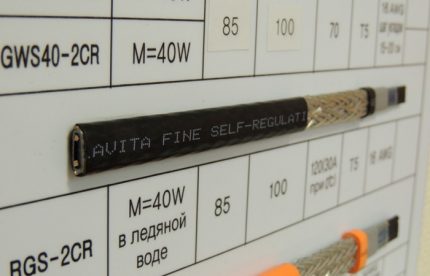
The cable marking without braid may look like this: SRL 30-2. In this case, it is a cable of the SRL brand, with a power of 30 W / m, planned for a voltage of 220 V.
The HS-FSM2 label also lacks CR symbols, which means that this cable does not have a screen.
Cable Selection Criteria
The selection of a heating cable in accordance with all the rules involves the consideration of several criteria:
- design features;
- type of external insulation;
- temperature class;
- section of a water pipe;
- power;
- manufacturer.
Externally, this type of product differs little from each other, but different brands of cable have their own individual characteristics. They are different, which can be well seen by a detailed examination of each criterion.
Criterion # 1 - cable design features
First of all, when choosing, you should pay attention to the design features of the heating cord. So, a self-regulating cable, in addition to two copper conductive cores and a matrix, can have insulation, braid, and an outer sheath.
Braid increases the mechanical strength of the product. If it is not on the thermal cable, this is an economy class product.
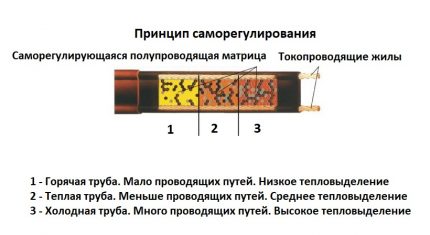
The presence on the market of a self-regulating cable that is not equipped with a copper braid, as well as external insulation, is not uncommon. This reduces the safety of the product, reliability and is contrary to generally accepted standards. In fact, this is not a cable, but only its blank.
Criterion # 2 - External Wire Insulation
The type of external insulation is also of great importance. To protect the domestic water supply, an insulating layer made of a polyolefin is quite suitable.
For production conditions, a fluoropolymer is more suitable as an external insulation. To lay the cable in the pipe, PTFE insulation is needed.
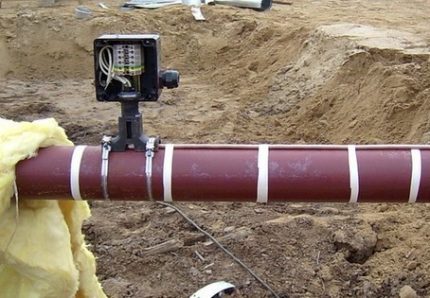
There are recommendations regarding the thickness of the insulation depending on the diameter of the pipe. With its value of 15 or 20 mm, the optimal thickness of the insulating layer is 20 mm. For sections 25 and 32 mm, the optimum insulation thickness is 30 mm. For water pipes with a section of 40, 50, 65 mm, the insulation thickness should be equal to the diameter of the product.
Criterion # 3 - cable temperature class
The temperature class is the next most important indicator when choosing a heating cable. A low-temperature product can warm up to 65 ° C with a specific heating power of a maximum of 15 W / m. Such a product is more suitable for a small pipeline.
A thermal cable that heats up to 120 ° C, with a maximum power of 33 W / m, is classified as medium temperature. It is used for pipes of medium diameter.
A cable that heats up to 190 ° C, with a power of 15 to 95 W / m, is better not to use at all for domestic water supply. It is used in industrial conditions, where a large diameter water pipe is laid.
Criterion # 4 - power selection
It is important, when choosing a thermal cable, proceed from the cross section of the water pipe and select the appropriate power from it.
Experts recommend focusing on the following parameters:
- diameter of the pipeline 1.5-2.5 cm - power 10 W / m;
- 2.5-4 cm - 16 W / m;
- 4-6 cm - 24 W / m;
- 6-8 cm - 30 W / m;
- More than 8 cm - 40 W / m.
The choice of power is impossible without taking into account the material of the pipe. If it is made of polymers, then the power cable should not go beyond 17 W / m. Otherwise, the water supply system may fail due to overheating.
The last criterion is the cable manufacturer. Better to pay a little more expensive, but the system will work like a clock.
You will learn how to choose a heating cable to protect sewer pipelines from next article, which we strongly recommend reading.
Conclusions and useful video on the topic
Video # 1. About the features of the choice:
Video # 2. About the device and the advantages of self-regulating cable:
When deciding on the purchase of a heating cable for your water main, you need to proceed from specific conditions, based on technical and operational characteristics.
If you approach the choice from the financial side, then the self-regulatory option will cost more. This choice is justified by high reliability and considerable energy savings.
Want to talk about how you chose and installed a heating cable with your own hands? Do you have useful information on the topic of the article, which is worth sharing with site visitors? Please write comments in the block below, ask questions and post photographs.

 Mounting the heating cable inside the pipe: installation instructions + selection tips
Mounting the heating cable inside the pipe: installation instructions + selection tips 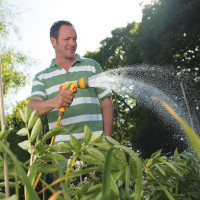 Watering nozzle: selection guidelines + product overview of popular brands
Watering nozzle: selection guidelines + product overview of popular brands 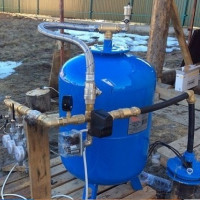 Hydraulic accumulators for water supply: operating principle, types, how to choose the right one
Hydraulic accumulators for water supply: operating principle, types, how to choose the right one 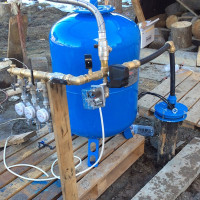 Do-it-yourself hydraulic accumulator: device, principle of operation, installation features
Do-it-yourself hydraulic accumulator: device, principle of operation, installation features 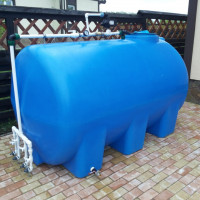 Plastic containers for water: types, advantages and disadvantages + recommendations for selection
Plastic containers for water: types, advantages and disadvantages + recommendations for selection 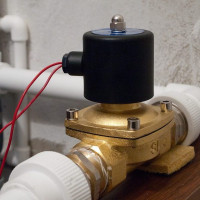 Solenoid solenoid valve: where used + types and principle of operation
Solenoid solenoid valve: where used + types and principle of operation  How much does it cost to connect gas to a private house: the price of organizing gas supply
How much does it cost to connect gas to a private house: the price of organizing gas supply  The best washing machines with dryer: model rating and customer tips
The best washing machines with dryer: model rating and customer tips  What is the color temperature of light and the nuances of choosing the temperature of the lamps to suit your needs
What is the color temperature of light and the nuances of choosing the temperature of the lamps to suit your needs  Replacement of a geyser in an apartment: replacement paperwork + basic norms and requirements
Replacement of a geyser in an apartment: replacement paperwork + basic norms and requirements
I believe that sometimes such cables are simply necessary, especially for those houses that are built in areas with extremely harsh climates. After all, if the water freezes in winter, then due to expansion, it can simply break the pipe. Personally, we were safe and also decided to install such a cable at the initial stage of construction. We bought a two-core cable, I don’t remember the manufacturer, since the team did everything, but for two years there were no problems.
I plan to use the water from the well in the country in the winter season. The distance from the well to the house is about 20 meters. HDPE pipe with a blue stripe, buried by 30-40 centimeters, there is no way to dig it deeper. I plan to use it on weekends, on New Year's holidays, etc., that is, not constantly. After use, I will drain the water. Which heating cable would be best for my situation?
It’s very bad that you can’t dig the pipe deeper, at least 1 m. But self-regulating cables were invented in order to help out precisely in such situations. For your case, I would recommend the cable ISTEC (EASTEC) SRL-16. The cost of the cable is about 100 rubles. per linear meter, it is not difficult to guess from the article that the power is 16 W / linear m.
This is a manufacturer from South Korea, a semiconductor matrix with a temperature class of T6 is used as a heating element. This self-regulating heating cable is just designed to heat gutters and pipes outside. In your case, you need to wind the cable spirally, in an average step, about 30 m of cable will come out to the pipe at 20 m, the total power is about 480 W. For an illustrative example, I attach a scheme for the spiral laying of a heating cable.